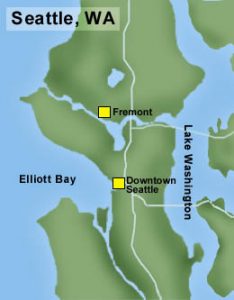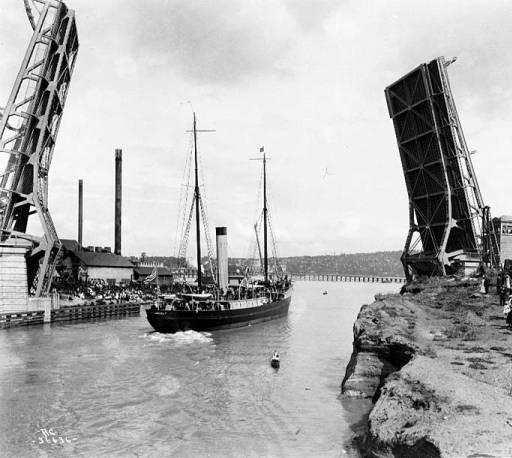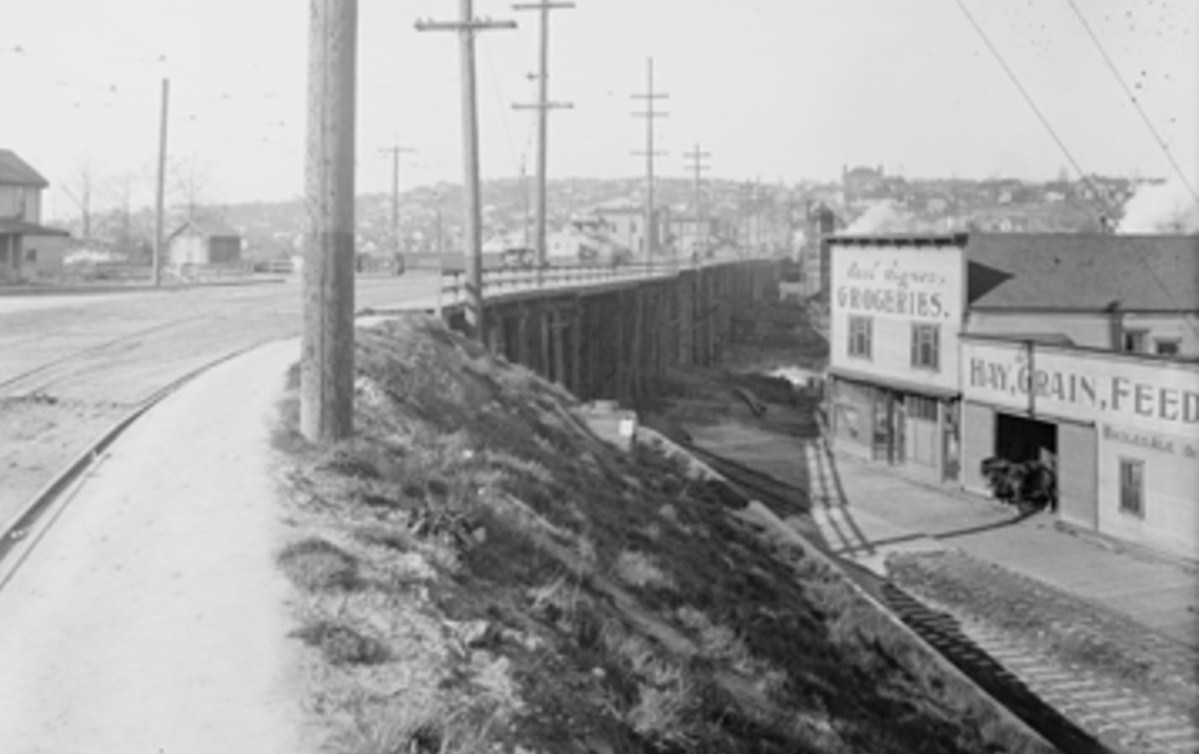In 1914 work was ongoing to dig the present ship canal at Fremont. The original, narrow channel had already been made wider and had been spanned with a bridge called a trestle, meaning a flat, rigid structure supported by posts. The trestle bridge was wide enough to support streetcar rails and had a lane for the increasing number of automobiles which were being driven in Seattle. During the work of digging a much deeper and wider channel for the ship canal, the waters of Lake Union were held back by a timber dam at the northwest corner of the lake.

Carl Signor’s grocery store was at 2944 Westlake Avenue North, just a few feet to the south of the Fremont Bridge. From his vantage point in the grocery store building overlooking the dam at the mouth of Lake Union, on March 13, 1914, Carl Signor saw the straining timbers with water beginning to leak through, and he heard the warning sounds of the dam’s impending break-up.
At the sound of the groaning timbers Carl Signor ran out into Westlake Avenue and stopped all streetcar and pedestrian traffic from crossing the endangered Fremont Avenue trestle bridge. A few minutes later, the dam burst and a torrent of water and timbers tore out the center of the trestle.
After the Fremont trestle collapse traffic had to be re-routed over another trestle located to the east on Stone Way. Fremont merchants were dissatisfied because without a bridge to Fremont Avenue, business flow was cut off and customers did not come past their stores. Another temporary trestle was built to Fremont, and then when the Lake Washington Ship Canal was completed, the modern Fremont bascule bridge, with counterweights which cause the bridge to swing open, was built in 1917.
Today’s Fremont Bridge is the busiest bascule bridge in the world, opening more times per day than any other of the Lake Washington Ship Canal Bridges of Seattle.

Sources:
$40,000 Loss from Bursting Fremont Dam.” Seattle Daily Times, March 14, 1914, pages 1, 5, and 12.
“Building permits, Carl Signor, 2944 Westlake Avenue, build two-story frame store building.” Seattle Daily Times, August 18, 1904, page 7.
Seattle Municipal Archives, photo number 2787, Signor grocery building.
“Wood trestle spans canal and connects Seattle’s Fremont neighborhood with the foot of Queen Anne Hill in 1892.” HistoryLink Essay #3309 by Priscilla Long.

